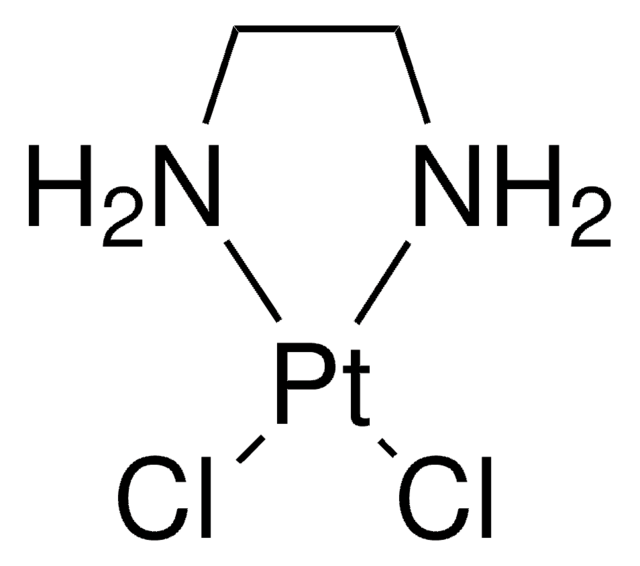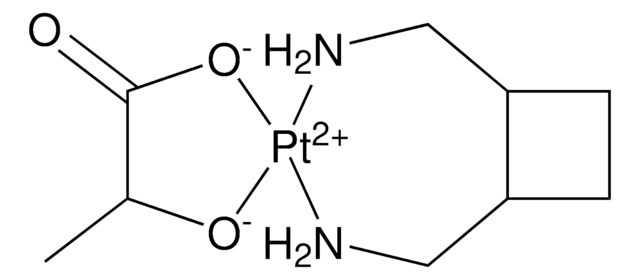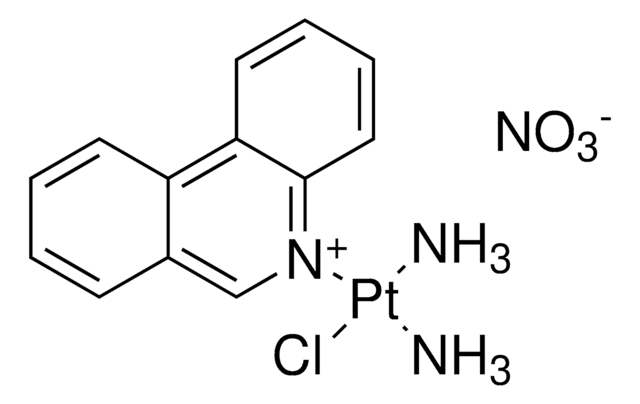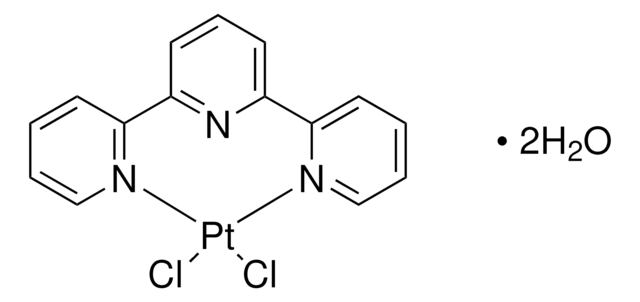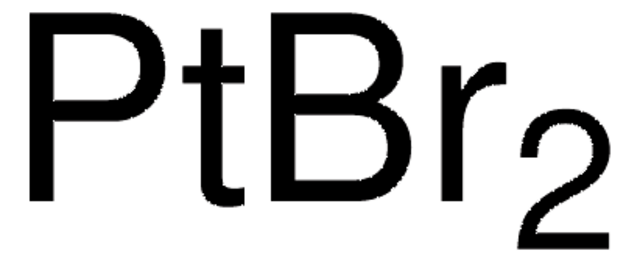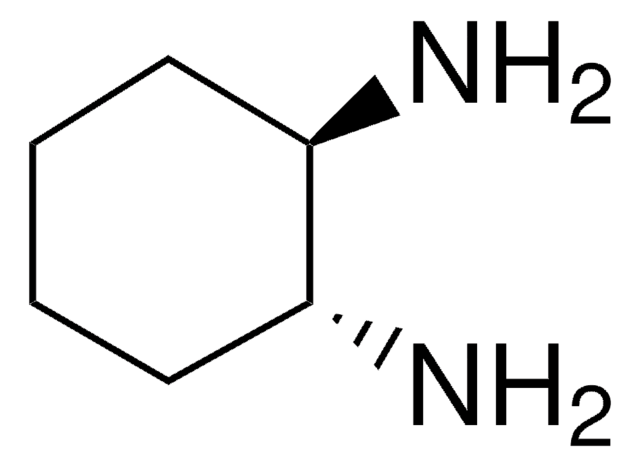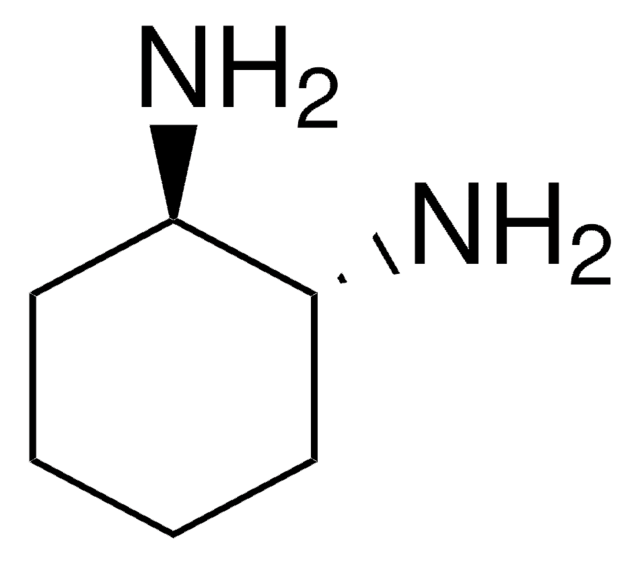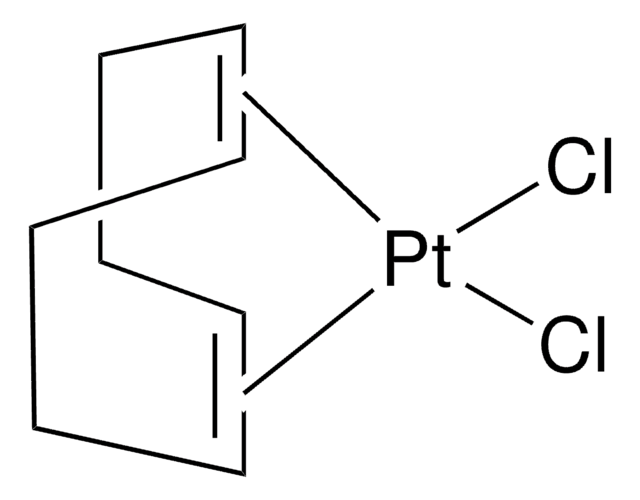404322
Dichloro(1,2-diaminocyclohexane)platinum(II)
Synonym(s):
(1,2-Diaminocyclohexane)platinum(II) chloride
About This Item
Recommended Products
Quality Level
reaction suitability
core: platinum
reagent type: catalyst
mp
280 °C (dec.) (lit.)
SMILES string
Cl[Pt]Cl.NC1CCCCC1N
InChI
1S/C6H14N2.2ClH.Pt/c7-5-3-1-2-4-6(5)8;;;/h5-6H,1-4,7-8H2;2*1H;/q;;;+2/p-2
InChI key
PNNCIXRVXCLADM-UHFFFAOYSA-L
signalword
Danger
Hazard Classifications
Carc. 2 - Eye Dam. 1 - Lact. - Muta. 2 - Repr. 1B - Resp. Sens. 1B - Skin Sens. 1 - STOT RE 1
Storage Class
6.1C - Combustible acute toxic Cat.3 / toxic compounds or compounds which causing chronic effects
wgk_germany
WGK 3
flash_point_f
Not applicable
flash_point_c
Not applicable
ppe
Eyeshields, Gloves, type N95 (US)
Choose from one of the most recent versions:
Already Own This Product?
Find documentation for the products that you have recently purchased in the Document Library.
Customers Also Viewed
Our team of scientists has experience in all areas of research including Life Science, Material Science, Chemical Synthesis, Chromatography, Analytical and many others.
Contact Technical Service